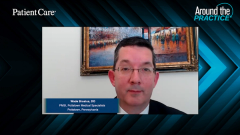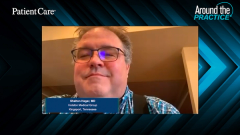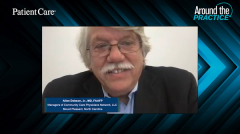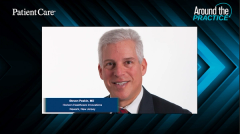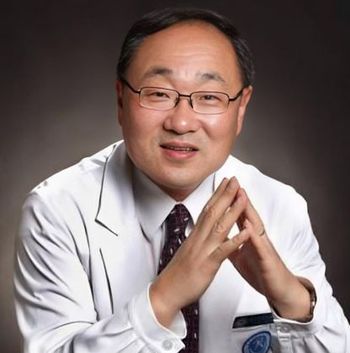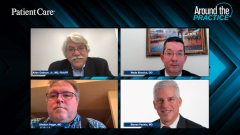
Diabetic Retinopathy Screening Guidelines and the Role of the Ophthalmologist
Key opinion leaders in diabetes management comment on the practical considerations of screening in clinical practices and note the importance of creating a replicable workflow for busy practices.
Episodes in this series

Allen Dobson, Jr., MD, FAAFP: When you’re doing the scanning in your office, who reads the scan? Is it automatic? Does the primary care physician read it, or is an overread service part of it?
Wade Brosius, DO: For us, the pictures go directly to an ophthalmologist. We’ve been happy with it, because there have been many times when I’ve done the scans in the morning and the reads are already sent back to me by the afternoon. As part of the workflow, we then reach out to the patient and let them know whether it was normal or abnormal, because that way we give them peace of mind. If it’s abnormal, we make sure to schedule them with a specialist.
Steven Peskin, MD: From a payer perspective, we pay the primary care a technical fee, and the retina subspecialist the professional fee.
Wade Brosius, DO: Great. Shelton, what do you do in your office, because it’s central? How do you guys work it?
Shelton Hager, MD: When I say central, it’s an off-site location from my office, but it’s a shared building. There are 2 offices in town. The other office has the diagnostic center with it. We also have it in our office. When we get the gap letters later in the year, that’s when we’re a little more actively trying to get them as well. We start at primary preventive at the beginning, and then we’re more active toward the end of the year.
Allen Dobson, Jr., MD, FAAFP: I have had a big interest in rural health care for years. This seems like a great adjunct to helping bring care to places where there aren’t enough resources. What do you do about the shortage of ophthalmologists, particularly in regard to access in these rural areas? Do you have any thoughts about how that’s handled? I’d assume that when someone screens positive, they need a follow-up dilated exam by a retina specialist or at least an ophthalmologist. Is that something that can be done remotely? Or do you need to create that link with your ophthalmology specialist colleagues?
Wade Brosius, DO: I’m in a suburban Philadelphia marketplace. We have an overabundance of ophthalmologists, so it isn’t a problem for us. But I have some colleagues who work in the Midwest where it can easily be a couple of hours’ worth of driving distance to see the specialist. But they’ve been able to create a specialist alliance where they have their preferred specialist. They’re able to have outreach and let them know that the screening report came back abnormal and send them a copy of the report, because the way we get them back is that it explains the findings. Usually by having a strategic alliance, they’re able to get their patients in in a timely manner.
Shelton Hager, MD: I agree. It depends on the severity of the illness and how far along they are. If we catch it in the beginning stages, that’s one thing. But when we start getting into the moderate and severe stages, that ups the ante to getting them to the specialist. Usually, the specialists, even in northeast Tennessee, are pretty receptive to getting people in.
Allen Dobson, Jr., MD, FAAFP: What are the recommendations as far as screening and initiation and frequency for diabetics? Is it yearly, bi-yearly?
Wade Brosius, DO: The screening recommendations are a little varied based on type 1 and type diabetes. In patients with type 2, it’s suggested that you get an initial screening by an ophthalmologist shortly after the diagnosis is made. In type 1, they suggest an initial comprehensive examination by an ophthalmologist within about 5 years of the diagnosis. Annual exams after that are usually indicated, unless the patient already has disease. In which case, it’s based on the level of severity, as Shelton said. You hope you get it well before people get to end-stage where they have proliferative retinopathy, because that’s a disaster for everyone. But as far as I know, those are the recommendations. Shelton, do you do anything better?
Shelton Hager, MD: No. I’m simplistic, I just do things annually. It’s such a silent disease that can progress quickly. I try to get mine in every year if possible. But the other thing too is we start farming them out as we already alluded to. The optometrist does some, along with the ophthalmologist, and our own office as a catch-all.
Transcript Edited for Clarity
Newsletter
Enhance your clinical practice with the Patient Care newsletter, offering the latest evidence-based guidelines, diagnostic insights, and treatment strategies for primary care physicians.

